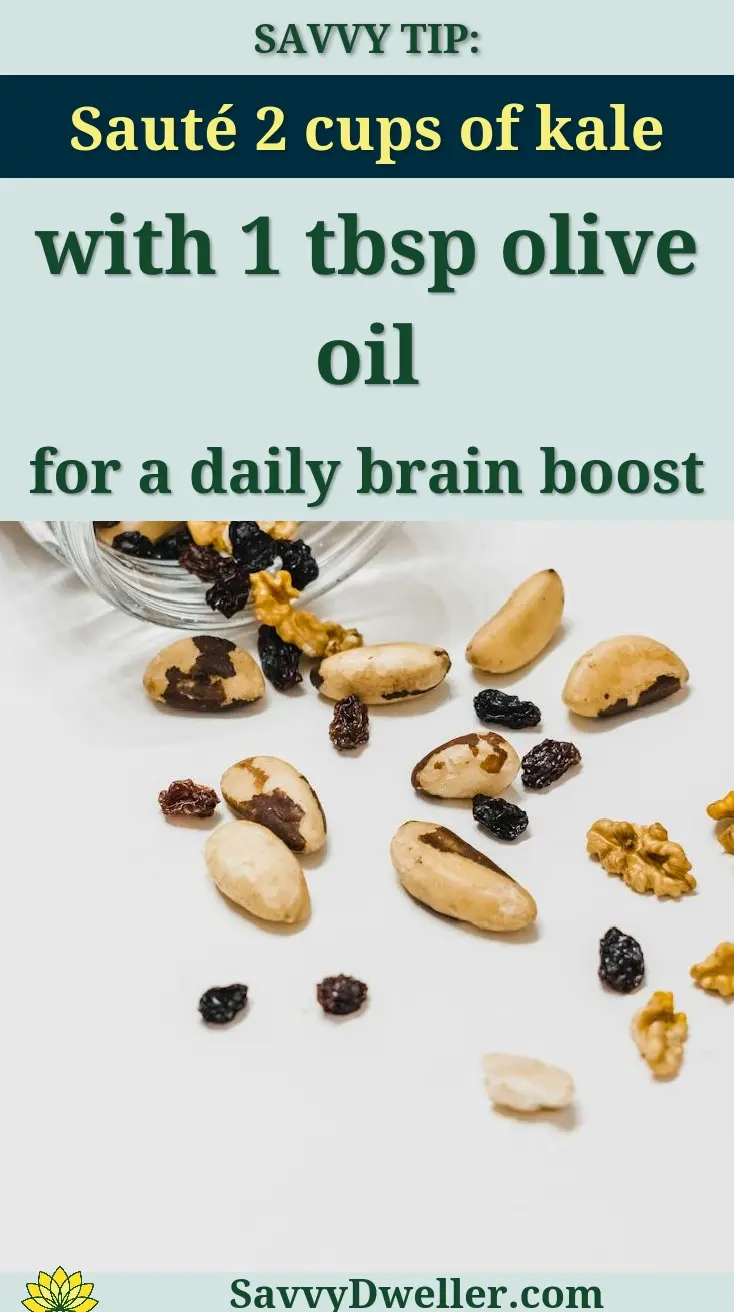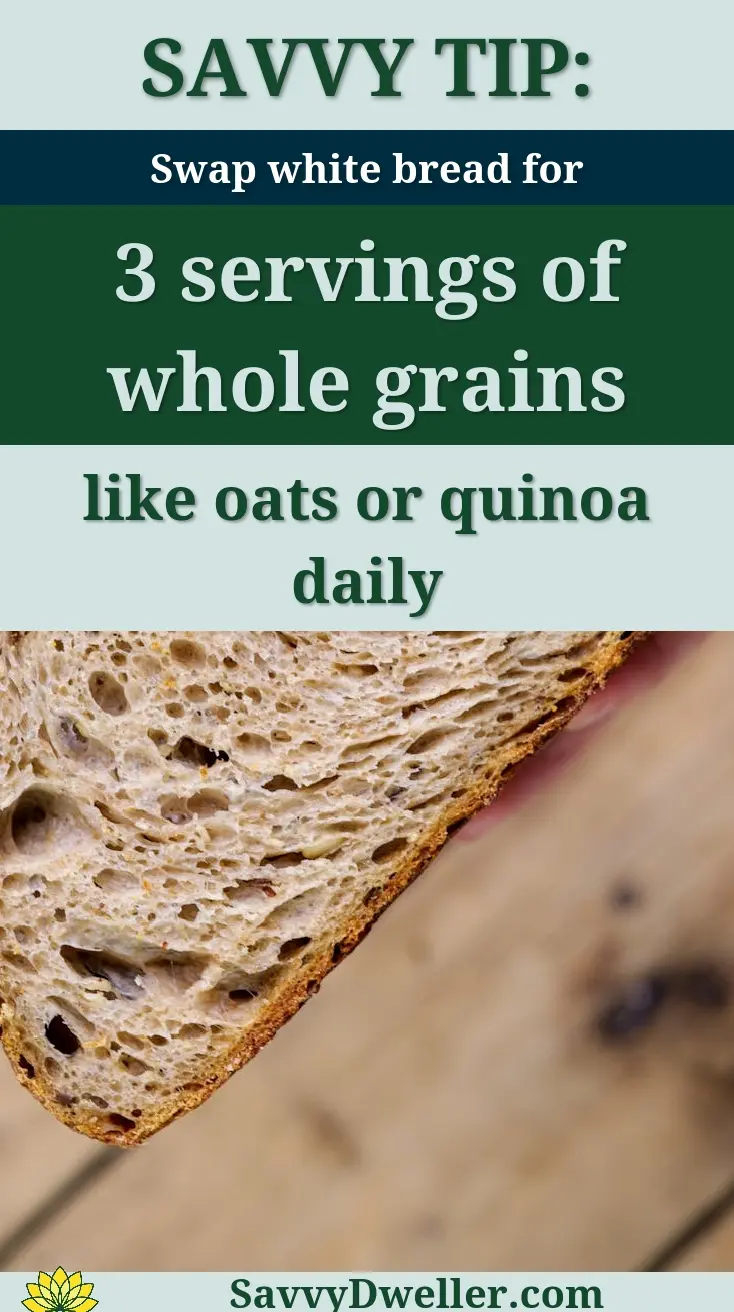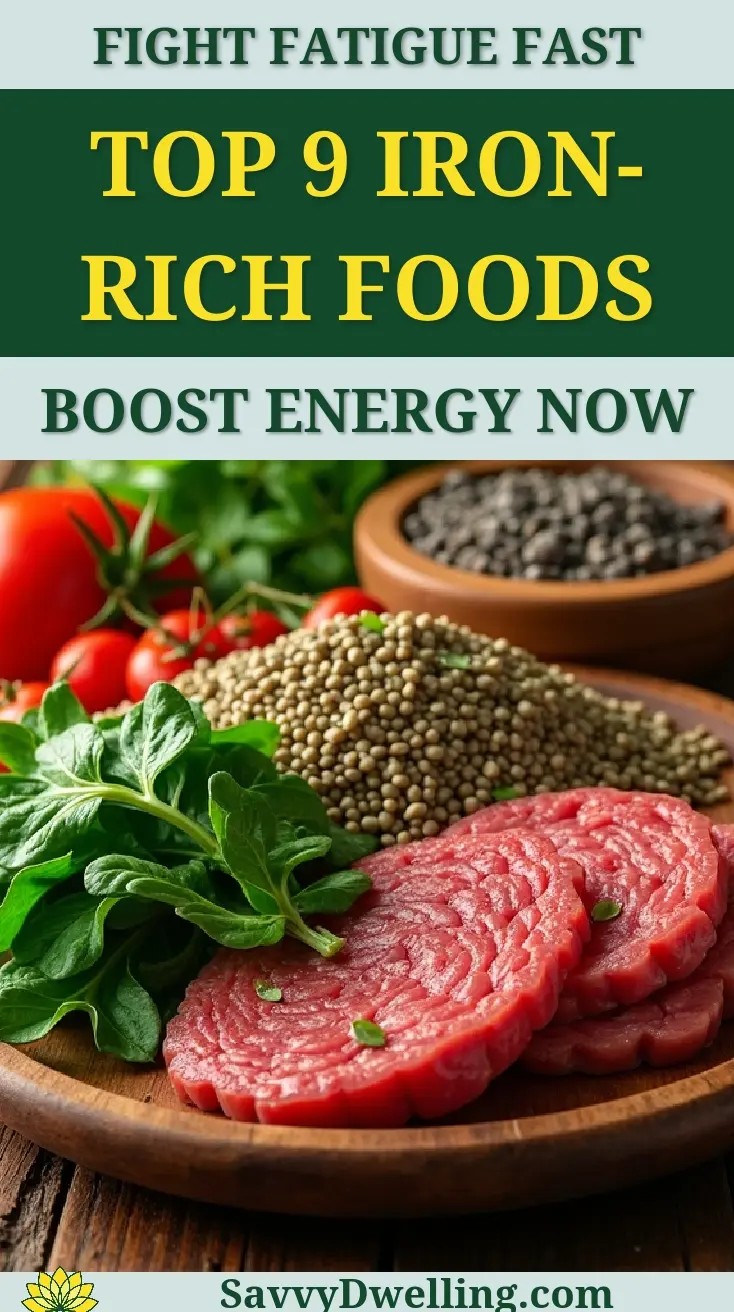A Guide to the MIND Diet for Brain Health: Support Your Cognitive Function Naturally
Have you noticed moments where you walk into a room and forget why you’re there, or struggle to recall a word that’s right on the tip of your tongue? These occasional memory lapses might feel worrying, but there’s encouraging news about how your daily food choices can support your brain’s long-term health.
The MIND diet combines the best brain-supporting foods from Mediterranean and DASH eating patterns into one simple approach that anyone can follow. This guide breaks down exactly which foods to embrace, which to limit, and how to create satisfying meals that nourish your cognitive function naturally. You’ll find practical meal plans, budget-friendly shopping tips, and easy recipes that make brain-healthy eating both delicious and sustainable.
Contents
- At a Glance: The Best MIND Diet Solutions for Brain Health
- 1. Understanding What the MIND Diet is and How It Works
- 2. Essential MIND Diet Foods to Include Daily
- 3. Foods to Limit or Avoid on the MIND Diet
- 4. Creating Your MIND Diet Meal Plan and Shopping Strategy
- 5. Easy MIND Diet Recipes for Every Meal
- 6. Adapting the MIND Diet for Special Circumstances
- The Science Made Simple: How MIND Diet Foods Support Brain Health
- Common Mistakes to Avoid When Starting the MIND Diet
- Frequently Asked Questions About the MIND Diet
- Final Words: Your Journey to Better Brain Health Starts Now
At a Glance: The Best MIND Diet Solutions for Brain Health
The MIND diet combines the best brain-protective foods from Mediterranean and DASH eating patterns into one powerful approach. This research-backed dietary plan focuses on 10 brain-healthy food groups while limiting 5 potentially harmful ones.
You’ll find relief knowing this isn’t another restrictive diet with complicated rules. The MIND diet offers flexibility while targeting specific nutrients that support cognitive function and may help protect against age-related mental decline.
Top MIND Diet Foods for Daily Brain Support
- Leafy greens (6+ servings weekly): Spinach, kale, and arugula provide folate and vitamin K for memory support
- Berries (2+ servings weekly): Blueberries and strawberries deliver anthocyanins that protect brain cells
- Nuts (5 servings weekly): Almonds, walnuts, and pistachios offer vitamin E and healthy fats
- Whole grains (3+ servings daily): Oatmeal, quinoa, and brown rice provide steady brain fuel
- Fish (1+ serving weekly): Salmon, sardines, and mackerel supply omega-3 fatty acids for cognitive function
- Beans (3+ servings weekly): Lentils, chickpeas, and black beans deliver protein and fiber
- Poultry (2+ servings weekly): Chicken and turkey provide lean protein for neurotransmitter production
- Olive oil (primary cooking fat): Extra virgin olive oil contains antioxidants that fight inflammation
- Wine (1 glass daily, optional): Red wine provides resveratrol, though this remains optional
Foods to Limit for Optimal Brain Health
- Red meat: Limit to 4 servings or fewer per week
- Butter and margarine: Less than 1 tablespoon daily
- Cheese: Less than 1 serving per week
- Fried foods: Less than 1 serving per week
- Sweets and pastries: Less than 5 servings per week
The beauty of the MIND diet lies in its gradual, sustainable approach to better brain health. You don’t need to overhaul your entire eating pattern overnight. Small, consistent changes in your food choices can make a meaningful difference in supporting your cognitive wellness over time.
Research suggests that people who follow MIND diet principles most closely may experience slower cognitive decline compared to those eating typical Western diets. The combination of anti-inflammatory foods, antioxidant-rich choices, and brain-supporting nutrients creates an environment where your mind can thrive.
1. Understanding What the MIND Diet is and How It Works
The MIND diet stands for Mediterranean-DASH Intervention for Neurodegenerative Delay. This eating pattern combines the best brain-protective elements from both the Mediterranean and DASH diets into one focused approach.
Researchers at Rush University developed this dietary plan specifically to support cognitive function and potentially slow age-related mental decline. The MIND diet emphasizes 10 brain-healthy food groups while limiting 5 food categories that may negatively impact brain health. To enhance focus and clarity, incorporating certain foods can also help combat brain fog. A variety of nutrient-rich options can be included in daily meals to promote better mental performance.
Key Components Of the MIND Diet
The MIND diet operates on a simple scoring system that makes it easier to follow than other complex eating plans. You earn points by consuming specific amounts of brain-supporting foods each week.
Here are the 10 brain-healthy food groups you should prioritize:
- Leafy greens – 6 or more servings per week
- Other vegetables – At least 1 serving daily
- Nuts – 5 servings per week
- Berries – 2 or more servings per week
- Beans and legumes – 3 servings per week
- Whole grains – 3 or more servings daily
- Fish – At least 1 serving per week
- Poultry – 2 servings per week
- Olive oil – Use as your primary cooking fat
- Wine – No more than 1 glass daily (optional)
The beauty of this system lies in its flexibility – you don’t need to be perfect to see benefits. Even moderate adherence to MIND diet guidelines can support brain health over time.
How the MIND Diet Differs From Mediterranean and DASH Diets
While the MIND diet borrows from both parent diets, it makes specific modifications based on brain health research. Unlike the Mediterranean diet, the MIND diet doesn’t emphasize all fruits equally – it specifically highlights berries for their unique cognitive benefits.
The DASH diet focuses primarily on blood pressure reduction through sodium restriction and increased potassium intake. The MIND diet takes this foundation but adds specific brain-protective nutrients like omega-3 fatty acids and antioxidants found in leafy greens. Incorporating a DASH diet meal plan can further enhance your journey toward lowering blood pressure. This approach not only emphasizes healthy food choices but also helps in managing heart health effectively.
Another key difference is portion specificity. While Mediterranean and DASH diets offer general guidelines, the MIND diet provides exact weekly serving recommendations for each food group. This precision makes meal planning more straightforward.
Who Can Benefit From Following the MIND Diet
The MIND diet isn’t just for people concerned about memory loss or cognitive decline. Anyone looking to support their brain health through nutrition can benefit from these dietary guidelines. Incorporating specific foods into daily meals can further enhance cognitive function. Exploring 20 brain-boosting foods is a great way to discover tasty options that help preserve memory and overall brain health.
Adults in their 40s and 50s may find the MIND diet particularly valuable as a preventive approach. Research suggests that midlife dietary changes can have significant impacts on later cognitive function.
Caregivers of family members with dementia often adopt MIND diet principles as a proactive measure. The eating pattern is also suitable for people managing diabetes, high blood pressure, or heart disease, since these conditions share similar nutritional needs.

2. Essential MIND Diet Foods to Include Daily
Building your meals around specific brain-supporting foods makes following the MIND diet much simpler. These nutrient-dense options work together to provide your brain with the compounds it needs for optimal function.
Brain-supporting Vegetables and Leafy Greens
Leafy greens form the foundation of any effective MIND diet meal plan. Spinach, kale, arugula, and collard greens contain high concentrations of folate, vitamin K, and lutein – nutrients that support memory and cognitive processing.
Aim for at least one cup of raw leafy greens or half a cup of cooked greens daily. You can easily meet this target by adding spinach to smoothies, using mixed greens as salad bases, or incorporating kale into soups.
Other brain-friendly vegetables include broccoli, Brussels sprouts, and bell peppers. These colorful options provide vitamin C and other antioxidants that help protect brain cells from oxidative stress. Roasting these vegetables with olive oil enhances both flavor and nutrient absorption.
Nuts, Seeds, and Healthy Fats for Cognitive Function
Nuts serve as portable brain fuel packed with vitamin E, healthy fats, and protein. Walnuts contain particularly high levels of alpha-linolenic acid, a plant-based omega-3 fatty acid that supports brain structure. Including a variety of nuts in your diet can further enhance health benefits. In fact, exploring the 10 health benefits of walnuts and other nuts reveals their vital roles in reducing inflammation and promoting heart health.
A standard MIND diet serving equals one ounce of nuts – roughly 24 almonds, 18 cashews, or 14 walnut halves. Eating nuts five times per week provides sustained energy for your brain while supporting memory formation.
Seeds like flaxseeds, chia seeds, and pumpkin seeds offer similar benefits in smaller packages. Sprinkle them on yogurt, blend into smoothies, or use as crunchy salad toppings to boost your intake of brain-healthy fats.
Whole Grains and Legumes for Sustained Brain Energy
Your brain requires steady glucose levels to function optimally, making whole grains an important part of MIND diet recipes. Quinoa, brown rice, oats, and barley provide complex carbohydrates that release energy slowly throughout the day.
Legumes like lentils, chickpeas, and black beans offer protein plus fiber that helps stabilize blood sugar. Including beans in your MIND diet meal plan three times per week provides your brain with B vitamins needed for neurotransmitter production. These nutritious foods also play a crucial role in maintaining stable blood sugar levels for diabetics. Incorporating legumes into daily meals can be one of the best strategies for managing diabetes through diet.
Try swapping refined grains for whole grain alternatives gradually. Use brown rice instead of white, choose whole wheat pasta, or start your day with steel-cut oats topped with berries and nuts.
Fish, Poultry, and Brain-healthy Proteins
Fatty fish like salmon, sardines, and mackerel contain DHA and EPA – omega-3 fatty acids that form structural components of brain cells. These healthy fats help maintain cognitive function and may support memory retention.
Eating fish at least once per week provides your brain with these crucial omega-3s in their most bioavailable form. If you’re not a fish fan, try canned salmon in salads or sardines on whole grain crackers.
Poultry serves as a lean protein source that’s more brain-friendly than red meat. Chicken and turkey provide B vitamins and choline, nutrients that support neurotransmitter function. Aim for two servings of poultry per week as part of your MIND dietary brain health approach.
Also See: Best and Worst Foods for Thyroid Health: A Guide
3. Foods to Limit or Avoid on the MIND Diet
Understanding which foods to minimize is just as important as knowing what to include. The MIND diet identifies five food categories that may negatively impact brain health when consumed in excess.
Processed Foods That May Impact Brain Health
Highly processed foods often contain additives, preservatives, and artificial ingredients that your brain doesn’t recognize as fuel. These products typically lack the nutrients your cognitive system needs while providing empty calories.
Limiting processed snacks, packaged meals, and fast food to less than 5 servings per week supports better brain function. This includes items like chips, cookies, frozen dinners, and drive-through meals.
When you do choose processed options, read labels carefully. Look for products with fewer than 5 ingredients, and avoid items containing artificial colors, flavors, or preservatives whenever possible.
Sugary Treats and Refined Carbohydrates
Refined sugars cause rapid spikes in blood glucose that can impair cognitive function over time. Pastries, candy, sugary drinks, and white bread digest quickly, leading to energy crashes that affect mental clarity.
The MIND diet recommends limiting sweets and pastries to no more than 5 servings per week. This moderation approach allows occasional treats while protecting your brain from sugar-related inflammation.
Replace sugary snacks with fresh berries, which provide natural sweetness plus antioxidants that actively support brain health. Dark chocolate with at least 70% cocoa content can satisfy sweet cravings while providing beneficial compounds. Incorporating dark chocolate into your diet is a delicious way to enhance well-being. It offers numerous health benefits, making it a worthy addition to any healthy eating plan.
Red Meat and High-sodium Foods
Red meat contains saturated fats and compounds that may contribute to inflammation when consumed frequently. The MIND diet suggests limiting red meat to fewer than 4 servings per week.
High-sodium foods like processed meats, canned soups, and restaurant meals can negatively impact blood flow to the brain. Reducing sodium intake supports healthy circulation, which ensures your brain receives adequate oxygen and nutrients.
Choose fresh or frozen vegetables over canned versions to reduce sodium intake. When using canned products, rinse beans and vegetables before eating to remove excess salt.
Trans Fats and Fried Foods
Trans fats, found in many fried foods and processed baked goods, can interfere with brain cell communication. These artificial fats may contribute to cognitive decline and should be avoided as much as possible.
Fried foods like french fries, fried chicken, and doughnuts absorb large amounts of unhealthy oils during cooking. Limiting fried foods to less than once per week allows your brain to focus on processing beneficial nutrients instead of harmful compounds.
Try air frying, baking, or roasting foods instead of deep frying. These cooking methods provide similar textures and flavors without the negative health impacts of excessive oil absorption.
4. Creating Your MIND Diet Meal Plan and Shopping Strategy
Weekly Meal Planning Made Simple
Planning your MIND diet meal plan doesn’t have to feel overwhelming. Start by mapping out just three days at a time instead of tackling an entire week.
Use this simple framework to build each day: one leafy green at lunch, berries with breakfast or as a snack, and fish or poultry for dinner twice weekly. Fill in the gaps with whole grains, nuts, and beans to round out your MIND diet meals.
Keep a running list of your family’s favorite combinations. When you find a winning formula like spinach salad with walnuts and salmon, repeat it weekly to reduce decision fatigue.
MIND Diet Shopping List Essentials
Your MIND diet food list should focus on fresh, frozen, and shelf-stable staples that support brain health. Stock these categories weekly to ensure you always have brain-supporting ingredients on hand.
Build your cart around these core MIND diet foods:
- Leafy greens: Spinach, kale, arugula, romaine lettuce
- Berries: Blueberries, strawberries, blackberries (fresh or frozen)
- Nuts and seeds: Walnuts, almonds, sunflower seeds, flaxseeds
- Whole grains: Quinoa, brown rice, oats, whole wheat pasta
- Brain-healthy proteins: Salmon, sardines, chicken breast, turkey
- Legumes: Lentils, chickpeas, black beans, navy beans
- Olive oil: Extra virgin, cold-pressed varieties
- Other vegetables: Broccoli, bell peppers, carrots, sweet potatoes
Frozen versions of berries and vegetables work just as well as fresh ones. They’re often more affordable and won’t spoil before you can use them.
Budget-friendly MIND Diet Shopping Tips
Following the MIND diet plan doesn’t require expensive specialty foods. Focus on seasonal produce, bulk bins, and strategic shopping to keep costs manageable.
Buy nuts, seeds, and whole grains from bulk bins to save up to 50% compared to packaged versions. Store them in airtight containers at home to maintain freshness.
Canned salmon and sardines provide the same omega-3 benefits as fresh fish at a fraction of the cost. Look for varieties packed in water or olive oil without added sodium. Incorporating these fish into a balanced diet can greatly enhance overall health. The omega-3 fatty acids found in salmon are known for supporting heart health and brain function.
Frozen berries often cost less per pound than fresh ones and blend perfectly into smoothies or oatmeal. Buy them in larger bags when they’re on sale and portion into smaller containers.
Meal Prep Ideas for Busy Schedules
Batch cooking transforms your MIND diet recipes into grab-and-go meals. Spend two hours on Sunday preparing components you can mix and match throughout the week.
Prep these brain-healthy staples in advance:
- Cook grains in bulk: Prepare 3-4 cups of quinoa or brown rice to use in salads, bowls, and sides
- Wash and chop vegetables: Pre-cut bell peppers, carrots, and leafy greens for easy assembly
- Portion nuts and seeds: Divide into small containers for quick snacks or meal toppers
- Prepare protein: Bake chicken breasts or cook a batch of lentils to add to various meals
- Make dressings: Whisk together olive oil-based vinaigrettes to store in the fridge
Mason jar salads stay fresh for up to five days when layered properly. Put dressing on the bottom, sturdy vegetables in the middle, and leafy greens on top.

5. Easy MIND Diet Recipes for Every Meal
Brain-boosting Breakfast Ideas
Start your day with MIND diet meals that fuel your brain without requiring extensive morning prep. These recipes for MIND diet breakfasts combine multiple brain-supporting foods in each dish.
Berry Walnut Overnight Oats combines four MIND diet foods in one convenient breakfast. Mix ½ cup rolled oats with ¼ cup blueberries, 2 tablespoons chopped walnuts, and enough milk to cover. Refrigerate overnight and enjoy cold or warmed.
Spinach and mushroom scrambled eggs provide protein while sneaking in vegetables early in the day. Sauté a handful of baby spinach and sliced mushrooms in olive oil before adding beaten eggs. Serve with a slice of whole grain toast.
Green smoothie bowls pack multiple servings of leafy greens into a breakfast that tastes like dessert. Blend spinach, frozen berries, banana, and a splash of milk until thick. Top with chopped almonds and additional berries.
Nutritious Lunch Options
Midday MIND diet meals should provide sustained energy without causing afternoon sluggishness. Focus on combinations that include leafy greens, healthy fats, and lean proteins.
Mediterranean quinoa bowls deliver complete nutrition in a single dish. Layer cooked quinoa with mixed greens, chickpeas, diced vegetables, and a drizzle of olive oil and lemon juice. Add crumbled feta cheese if desired.
Lentil and vegetable soup makes excellent batch cooking for busy weeks. Simmer red lentils with diced carrots, celery, onions, and leafy greens in vegetable broth. Season with herbs and serve with whole grain crackers.
Salmon and avocado wraps using whole wheat tortillas provide omega-3 fatty acids and fiber. Mash avocado with lemon juice, spread on the tortilla, and add flaked cooked salmon, spinach, and sliced vegetables.
Satisfying Dinner Recipes
Evening meals on the MIND diet plan should feel substantial while incorporating the day’s remaining vegetable and protein requirements. These recipes scale easily for families or meal prep.
Sheet pan chicken and vegetables simplifies dinner preparation while maximizing nutrition. Toss chicken thighs with chopped sweet potatoes, broccoli, and bell peppers in olive oil and herbs. Roast everything together for 25-30 minutes.
Black bean and vegetable chili provides plant-based protein and counts toward your weekly legume servings. Combine black beans, diced tomatoes, bell peppers, and onions with chili spices. Simmer for 20 minutes and serve over brown rice.
Baked cod with herb crust offers a mild-flavored way to include fish in your weekly rotation. Mix whole wheat breadcrumbs with chopped parsley, garlic, and olive oil. Press onto cod fillets and bake until flaky.
Healthy Snacks and Treats
MIND diet snacks should bridge hunger gaps between meals while contributing to your daily brain-food goals. Keep portions moderate to maintain appetite for main meals.
Mixed nuts and berries create the perfect brain-supporting snack combination. Portion ¼ cup mixed nuts with ½ cup fresh or frozen berries for a satisfying afternoon energy boost.
Hummus with vegetable sticks provides protein and fiber while encouraging more vegetable consumption. Pair homemade or store-bought hummus with bell pepper strips, carrot sticks, or cucumber rounds.
Dark chocolate-covered strawberries satisfy sweet cravings while delivering antioxidants. Melt dark chocolate (70% cacao or higher) and dip fresh strawberries. Refrigerate until set for a brain-healthy treat.
6. Adapting the MIND Diet for Special Circumstances
MIND Diet for Caregivers and Family Members
When you’re caring for someone following the MIND diet for brain health, adapting family meals becomes simpler than cooking separate dishes. Focus on modifications rather than complete menu overhauls.
Prepare base recipes that accommodate everyone, then customize individual portions based on dietary needs. A grain bowl bar lets family members choose their own toppings while ensuring the care recipient gets MIND diet foods.
Batch cook MIND-friendly components that work for multiple family members. Roasted vegetables, cooked grains, and simple proteins can be mixed and matched based on individual preferences and restrictions.
Keep backup options ready for days when meal planning falls apart. Frozen berries, nuts, and canned salmon provide quick additions to transform any meal into a more brain-supportive option.
Modifications for Swallowing or Texture Challenges
Swallowing difficulties don’t prevent someone from following MIND dietary brain health principles. Texture modifications can maintain nutritional benefits while ensuring safe consumption.
Smoothies and pureed soups deliver concentrated MIND diet nutrition in easy-to-swallow forms. Blend leafy greens, berries, and nut butters into smoothies, or puree vegetable and lentil soups until smooth.
Ground nuts and seeds sprinkled over soft foods provide healthy fats without chewing challenges. Mix ground walnuts into yogurt or oatmeal, or stir ground flaxseeds into smoothies.
Flaked fish mixes easily into soft preparations like scrambled eggs or mashed sweet potatoes. Canned salmon or sardines work particularly well for these texture-modified approaches.
Supporting Picky Eaters With MIND Diet Principles
Picky eaters can still benefit from MIND diet brain health principles through gradual exposure and creative preparation methods. Start with familiar foods and make small modifications over time.
Hide leafy greens in familiar dishes like smoothies, pasta sauces, or meatballs to increase acceptance without overwhelming sensitive palates. Finely chopped spinach disappears into many recipes while providing nutritional benefits.
Offer berries as natural sweet treats instead of processed snacks. Frozen berries can satisfy cravings for cold, sweet foods while providing antioxidants and fiber.
Present nuts and seeds in appealing formats like trail mixes or as coatings for chicken strips. Gradual exposure to different textures and flavors helps expand acceptance over time.
MIND Diet Considerations for Seniors
Seniors following the what is the MIND diet approach may need modifications for changing appetites, medication interactions, and physical limitations. Adapt portion sizes and preparation methods while maintaining core nutritional principles.
Smaller, more frequent meals may work better than traditional three-meal patterns for seniors with decreased appetites. Focus on nutrient-dense options that pack maximum brain-supporting benefits into smaller portions.
Soft-cooked vegetables and tender proteins accommodate changing dental health while maintaining MIND diet food list requirements. Steaming, roasting, and slow-cooking methods create appealing textures.
Consider supplement consultations with healthcare providers for nutrients that become harder to obtain through food alone. Omega-3 supplements or vitamin B12 may support the dietary approach when food intake becomes limited.
The Science Made Simple: How MIND Diet Foods Support Brain Health
Your brain needs specific nutrients to stay sharp, just like a car needs the right fuel to run smoothly. The MIND diet foods work together to create a protective shield around your brain cells while supporting the communication networks that keep your memory and thinking clear.Understanding how these foods work at the cellular level helps you make choices that truly support your cognitive function. Think of it as giving your brain the building blocks it needs to repair itself and stay resilient against age-related changes.
Antioxidants and Brain Protection
Your brain uses more oxygen than any other organ in your body, which creates harmful byproducts called free radicals. These unstable molecules can damage brain cells over time, leading to cognitive decline and memory problems.Antioxidants in MIND diet foods act like tiny bodyguards, neutralizing free radicals before they can harm your neurons. Blueberries contain anthocyanins, dark leafy greens provide lutein and zeaxanthin, while colorful vegetables offer a spectrum of protective compounds.The beauty of following MIND dietary brain health principles is that you’re getting antioxidants from multiple sources throughout the day. Each meal becomes an opportunity to flood your brain with protective nutrients that accumulate over time.
Omega-3 Fatty Acids and Cognitive Function
Your brain is nearly 60% fat, and the type of fat you eat directly affects how well your neurons communicate with each other. Omega-3 fatty acids, particularly DHA, make up the outer membranes of brain cells and keep them flexible and responsive.Fish rich in omega-3s help maintain the structural integrity of your brain while supporting the formation of new neural connections. This is why the MIND diet emphasizes eating fish at least once per week, with fatty fish like salmon, sardines, and mackerel being top choices.When you don’t get enough omega-3s, brain cell membranes become rigid and less efficient at transmitting signals. This can manifest as difficulty concentrating, slower processing speed, and memory lapses.
B Vitamins and Memory Support
B vitamins work as a team to support brain metabolism and neurotransmitter production. Your brain cells need these vitamins to convert food into energy and manufacture the chemical messengers that control mood, memory, and focus.Folate, B6, and B12 are particularly important for maintaining healthy homocysteine levels, which when elevated can damage blood vessels in the brain. Leafy greens, legumes, and whole grains in the MIND diet provide these essential nutrients naturally.Vitamin B1 (thiamine) helps your brain use glucose efficiently, while B6 supports the production of neurotransmitters like serotonin and dopamine. When you follow MIND diet meal plan guidelines, you’re ensuring a steady supply of these memory-supporting nutrients.
Common Mistakes to Avoid When Starting the MIND Diet
Starting any new eating pattern can feel overwhelming, especially when you’re eager to support your brain health. Many people stumble into predictable pitfalls that can derail their progress or leave them feeling frustrated with their results.Avoiding these common mistakes will help you build sustainable habits that truly benefit your cognitive function. Remember, the goal is creating lasting changes that feel natural and enjoyable, not perfection from day one.
Expecting Immediate Results
Your brain didn’t develop its current patterns overnight, and it won’t transform immediately when you start eating MIND diet foods. Brain health improvements typically unfold over months and years, not days or weeks.Research suggests that people following the MIND diet for brain health may notice subtle changes in focus and energy within a few weeks, but significant cognitive benefits develop over 6-12 months. Think of it like strength training for your brain—consistent effort compounds over time.Some people give up after a month because they don’t feel dramatically different. Instead of looking for major changes, pay attention to small improvements like better sleep, more stable energy, or slightly sharper focus during afternoon meetings.
Making Too Many Changes at Once
Completely overhauling your eating habits in one week is a recipe for burnout and failure. Your brain actually resists dramatic changes, making it harder to stick with new behaviors when you try to do everything simultaneously.Start by adding one or two MIND diet foods to your current routine rather than eliminating everything you normally eat. For example, add a handful of nuts to your afternoon snack or include leafy greens in one meal per day.Once these small changes become automatic (usually after 2-3 weeks), gradually introduce more MIND diet recipes and reduce foods that don’t support brain health. This approach feels less overwhelming and creates lasting habits.
Focusing Only on “Forbidden” Foods
Many people become obsessed with what they can’t eat rather than celebrating all the delicious foods that support brain health. This negative mindset can lead to feelings of deprivation and increase cravings for restricted foods.The MIND diet emphasizes abundance rather than restriction—you’re adding brain-protective foods, not following a rigid elimination diet. Focus on crowding out less helpful foods by filling your plate with vegetables, whole grains, nuts, and other beneficial options.When you do eat foods that aren’t on the MIND diet food list, enjoy them without guilt. The 80/20 rule applies here—if most of your food choices support brain health, occasional treats won’t derail your progress.
Not Considering Individual Dietary Needs
The MIND diet provides excellent general guidelines, but your specific health conditions, medications, and personal preferences matter. Some people need to modify portions, cooking methods, or specific food choices based on their circumstances.If you have diabetes, kidney disease, or take blood-thinning medications, work with a healthcare provider to adapt MIND diet principles to your situation. For example, you might need to monitor vitamin K intake if you take warfarin, or adjust portion sizes if you’re managing blood sugar.Food allergies, intolerances, and cultural preferences also require thoughtful modifications. The beauty of the MIND diet is its flexibility—you can substitute foods within each category while maintaining the overall brain-healthy eating pattern.

Frequently Asked Questions About the MIND Diet
Can I Combine the MIND Diet With Other Eating Patterns Like Intermittent Fasting?
Yes, the MIND Diet can be compatible with intermittent fasting, as both focus on overall health. Prioritize consuming MIND Diet-approved foods during your eating windows, such as leafy greens, berries, and healthy fats, to ensure you meet nutritional needs. However, avoid skipping meals that contain essential brain-supporting nutrients, and consult a healthcare professional to tailor the approach to your individual health status.
How Does Hydration Support Brain Health on the MIND Diet?
Hydration is crucial for cognitive function, as dehydration can impair focus and memory. Aim to drink at least 8 glasses of water daily, and include hydrating foods like cucumbers or watermelon. Limit sugary drinks and excessive caffeine, as they can lead to dehydration; instead, opt for herbal teas or infused water to stay refreshed.
What Are Signs That the MIND Diet is Improving My Brain Health?
You might notice subtle improvements like better memory recall, increased mental clarity, or improved mood within a few weeks to months. Keep a journal to track changes in focus or energy levels. Remember that results vary per person, so combine the diet with regular sleep and exercise for maximum benefits.
Are There Specific Cooking Methods That Enhance MIND Diet Benefits?
Yes, certain methods help preserve nutrients. Steaming or sautéing vegetables lightly in olive oil retains antioxidants better than boiling. For fish, baking or grilling instead of frying maintains omega-3 fatty acids. Avoid charring or overcooking foods to prevent nutrient loss.
Do I Need Supplements While Following the MIND Diet?
The MIND Diet is designed to be nutrient-dense, so supplements are generally not necessary if you eat a varied diet. However, if you have deficiencies or dietary restrictions, consider consulting a doctor for personalized advice on vitamins like B12 or D. Focus on whole foods first for optimal absorption.
Final Words: Your Journey to Better Brain Health Starts Now
Supporting your cognitive function doesn’t have to feel overwhelming or restrictive. The MIND diet offers a practical, science-backed approach that you can start implementing today, one meal at a time. Remember, small consistent changes often lead to the most lasting benefits for your brain health.
You now have the tools to create nourishing meals, avoid common pitfalls, and adapt this eating pattern to fit your unique lifestyle. Whether you’re meal prepping brain-boosting breakfasts or swapping processed snacks for nuts and berries, every choice you make is an investment in your cognitive future. Your brain deserves the same care and attention you give to the rest of your health.
Ready to transform your kitchen into a brain-health powerhouse? Start with just one or two MIND diet principles this week and build from there. For more wellness tips and home solutions that support your healthiest lifestyle, explore Savvy Dwelling where we’re dedicated to helping you create spaces and habits that nurture both your mind and body.


